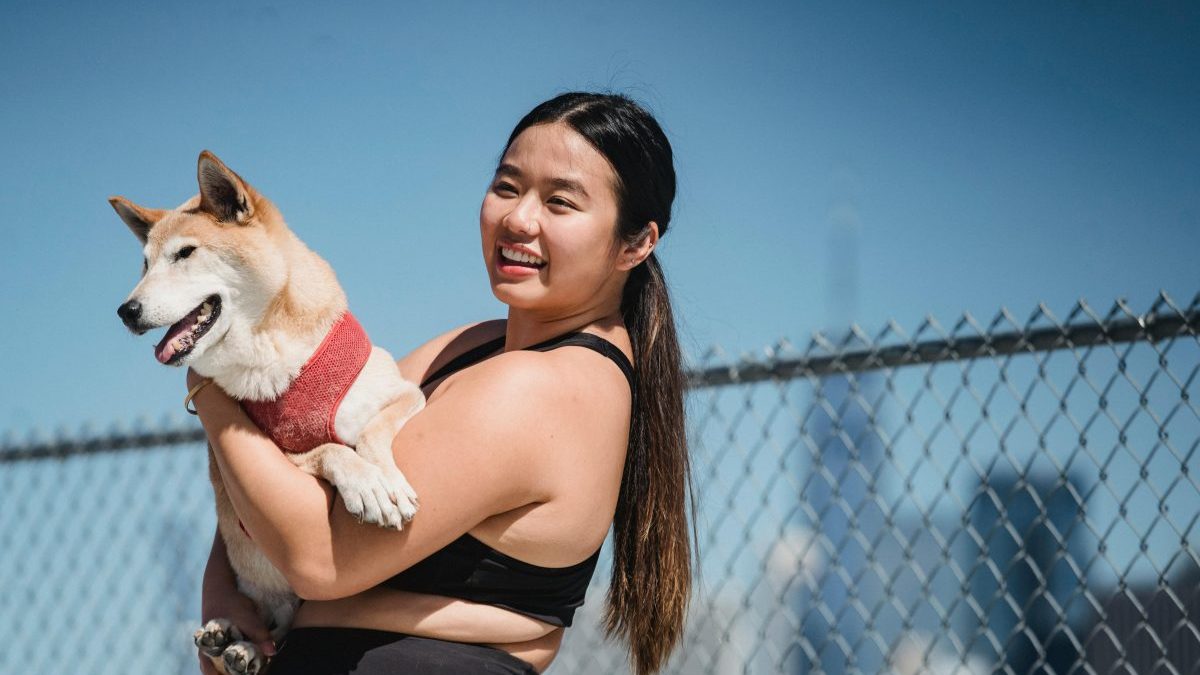Last Updated on: 14th July 2024, 09:33 am
Introduction to Canine Fitness

Physical activity isn’t just a human necessity; it’s crucial for our canine companions too. The importance of keeping our dogs active goes beyond mere movement; it’s about enhancing their quality of life. Exercising together strengthens the bond between dogs and their owners, creating a unique synergy that benefits both. This article aims to explore the multifaceted advantages of canine fitness, shedding light on how regular exercise can improve physical health, mental well-being, and the overall dynamic of your relationship with your furry friend.
Embarking on a fitness journey with your dog opens up a world of possibilities. Not only does it contribute to a healthy lifestyle, but it also fosters a deeper connection between you and your pet. Through this exploration, we’ll delve into the myriad benefits of canine fitness, offering insights and guidance on how to effectively engage in physical activities with your dog. Prepare to be inspired as we uncover the transformative power of exercising together.
Understanding Your Dog’s Exercise Needs
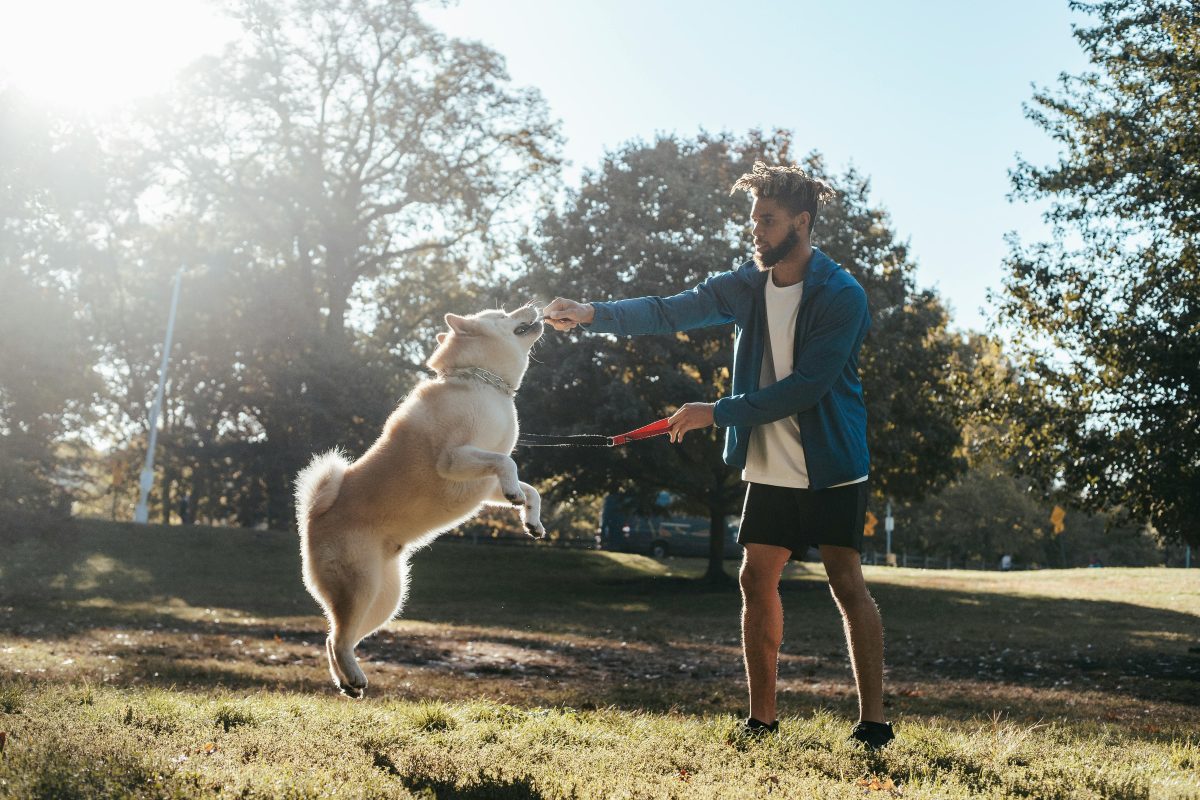
Every dog is unique, with exercise requirements shaped by age, breed, and health status. Younger dogs often have boundless energy, requiring more frequent and vigorous activities to stay content and healthy. Conversely, senior dogs benefit from gentler, shorter exercises tailored to their slower pace. Breed plays a pivotal role too; high-energy breeds like Border Collies and Australian Shepherds need more exercise than more sedentary breeds such as Bulldogs or Basset Hounds. Health conditions can also dictate the type and amount of exercise a dog can handle, making it essential to consider these factors carefully.
- Recognizing the signs of insufficient or excessive exercise is crucial.
- A dog not getting enough physical activity may display behaviors such as digging, excessive barking, or restlessness.
- On the flip side, signs of over-exertion include excessive panting, lethargy, or reluctance to engage in activities they usually enjoy.
Before embarking on a new exercise journey with your dog, consulting with a veterinarian is paramount. This step ensures the chosen activities are safe and appropriate for your dog’s age, breed, and health condition. A vet can offer tailored advice, helping you craft an exercise plan that promotes optimal health and happiness for your furry companion.
Understanding and meeting your dog’s exercise needs is a cornerstone of canine fitness. It’s not just about keeping them physically active; it’s about nurturing their overall well-being. With the right approach, you can ensure your dog enjoys a balanced, fulfilling life, full of joy and vitality.
Diverse Exercise Options for Your Canine Companion
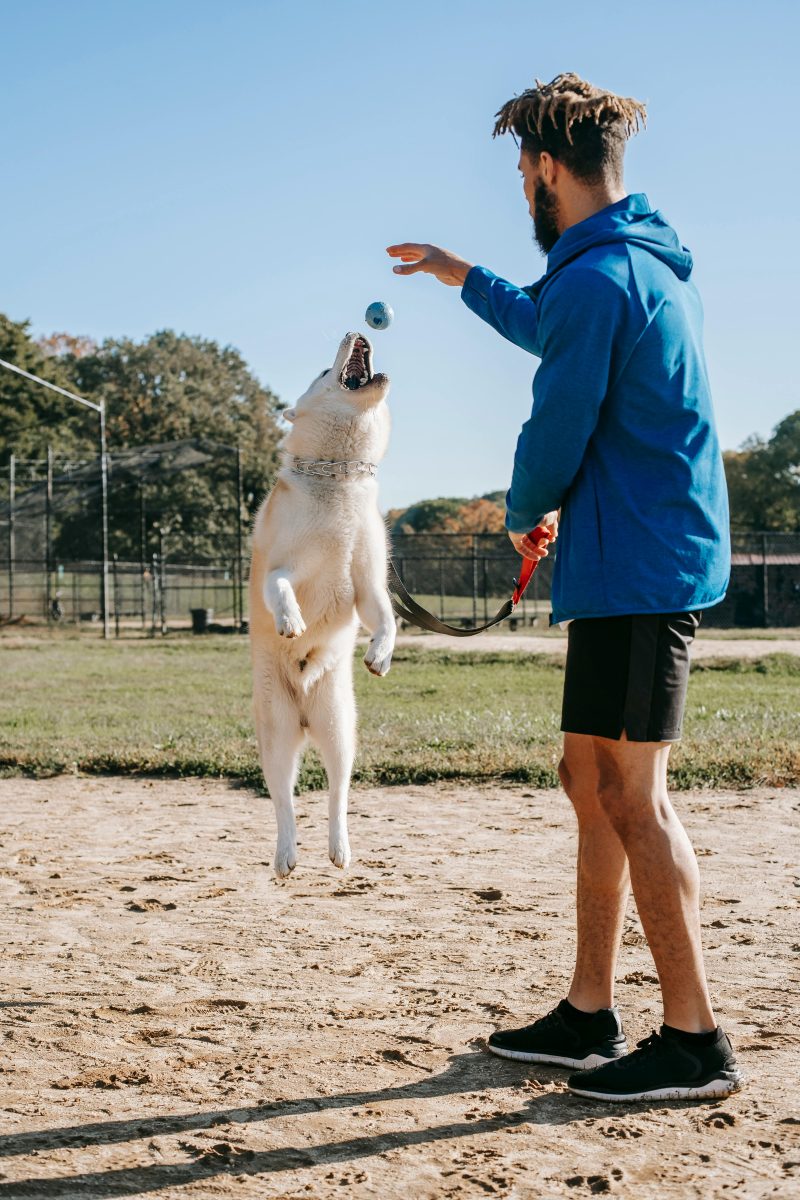
Walking and Hiking: Tailored Paces for Different Breeds
Walking and hiking stand as foundational activities in canine fitness. The key is to adjust the pace and difficulty based on your dog’s breed, age, and health. While a leisurely stroll suits a Bulldog, energetic breeds may require brisk walks or challenging hikes. This customization ensures both enjoyment and physical benefits, fostering a deeper bond between you and your pet.
Running: Building Endurance Safely
Running offers a fantastic way to boost your dog’s stamina and heart health. Start slow, gradually increasing the distance to prevent injuries. Pay attention to your dog’s signals; heavy panting or lagging means it’s time to pause. Always choose safe, dog-friendly environments to avoid hazards.
Interactive Games: Engaging Mind and Body
- Interactive games like fetch, tug-of-war, and agility training not only exercise the body but also stimulate the mind.
- These activities enhance your dog’s reflexes, provide mental stimulation, and strengthen your mutual connection.
- They’re fun, engaging, and can be tailored to any space, making them perfect for daily exercise.
Swimming: A Gentle Yet Effective Workout
Swimming is a low-impact exercise ideal for dogs with joint issues or those recovering from injury. It strengthens muscles without straining joints, making it a safe and enjoyable activity. Always prioritize safety by introducing your dog to water gradually and never leaving them unsupervised.
Each type of exercise offers unique benefits, contributing to a well-rounded fitness regimen for your dog. By incorporating a variety of activities, you can cater to your dog’s physical and mental needs, ensuring they lead a happy, healthy life.
Creating a Balanced Exercise Routine

Incorporating variety into your dog’s exercise routine is key to keeping them engaged and healthy. Just like humans, dogs thrive on a mix of activities that challenge them physically and mentally. From brisk walks to interactive games, varying the types of exercise can prevent boredom and promote overall well-being. This diversity ensures that your dog’s fitness regimen is comprehensive, targeting different muscle groups and fostering cognitive stimulation.
Adjusting exercise routines with the changing seasons is crucial for maintaining consistency in your dog’s physical activity. Cooler months might call for longer hikes or runs, while the summer heat may necessitate shorter, more frequent walks during cooler parts of the day. Always consider the weather and your dog’s comfort, adjusting activities to ensure they remain safe and enjoyable year-round.
- Rest days and recognizing signs of overexertion are fundamental aspects of a balanced exercise routine.
- Dogs, much like their owners, need time to recover after strenuous activities.
- Signs of overexertion, including excessive panting, lethargy, or reluctance to exercise, indicate the need for a break.
By thoughtfully designing your dog’s exercise routine, you can support their health and happiness. A balanced approach, mindful of variety, seasonal adjustments, and the importance of rest, will keep your dog fit and content. Engaging in these activities together not only strengthens the physical health of your canine companion but also deepens the bond you share, making every moment of exercise a joyous occasion.
Overcoming Common Challenges in Canine Fitness
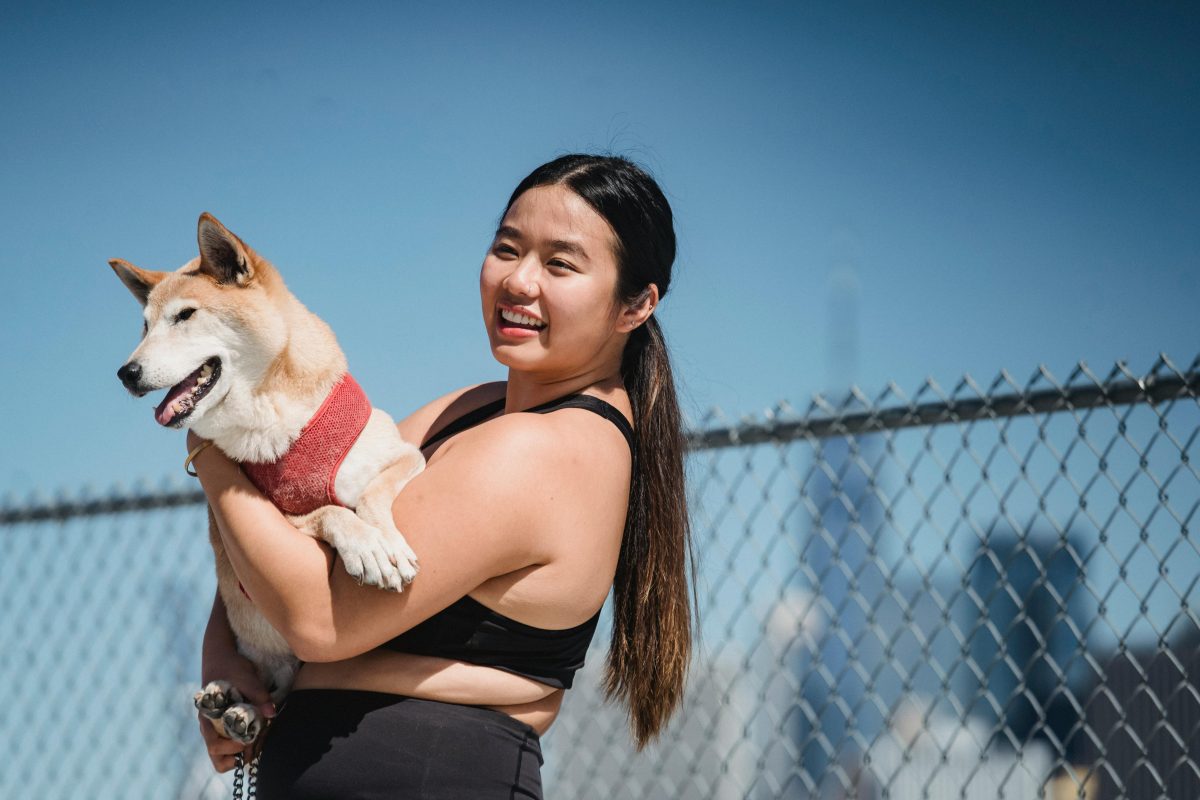
Time constraints often pose a significant challenge in maintaining a consistent exercise routine with your dog. However, integrating short, high-intensity activities can effectively utilize limited time. Quick games of fetch or tug-of-war in your backyard can significantly contribute to your dog’s physical well-being, ensuring they receive the necessary stimulation and exercise even on your busiest days.
Exercising a dog with health issues or disabilities requires a thoughtful, adaptive approach. Swimming, for instance, offers a gentle yet effective workout, ideal for dogs with joint problems or recovering from surgery. The buoyancy of water reduces stress on the body, allowing for muscle strengthening without the risk of injury. For visually impaired dogs, secure, familiar environments and the use of sound toys can make physical activity both safe and enjoyable.
Motivating a reluctant dog to engage in exercise can be challenging but is not insurmountable. The key lies in discovering what activities spark joy in your dog. Some may prefer the mental stimulation of scent games, while others might find joy in agility training. Offering a variety of activities and rewarding participation with treats or praise encourages your dog to be more active. Remember, patience and positive reinforcement are your best allies in fostering a love for exercise in your canine companion.
Each dog is unique, and their exercise needs and preferences will vary. By understanding and adapting to these needs, you can overcome common challenges in canine fitness, ensuring your dog remains healthy, happy, and active. Engaging in physical activities together not only benefits your dog’s physical health but also strengthens the bond you share, making every exercise session a rewarding experience for both of you.
Safety First: Exercising with Your Dog

Before leaping into action, a pre-exercise health check is a must. This precautionary step ensures your dog is ready to tackle the physical demands ahead. A quick once-over by a vet can catch any underlying issues that might be exacerbated by vigorous activity.
- Hydration is as vital for your dog as it is for you, especially to prevent overheating. Always carry water for both of you, and take breaks in the shade on warmer days.
- Watch for signs of heat exhaustion, such as excessive panting or drooling, and know when it’s time to cool down.
- Outdoor adventures come with their share of hazards. From hot pavement that can scorch paws to sharp objects hidden in the grass, it’s crucial to navigate these dangers mindfully.
- Keep an eye out for toxic plants or dangerous wildlife that could turn a fun outing into a risky ordeal. By staying vigilant, you can ensure a safe and enjoyable workout for you and your four-legged friend.
Building a Stronger Bond Through Exercise
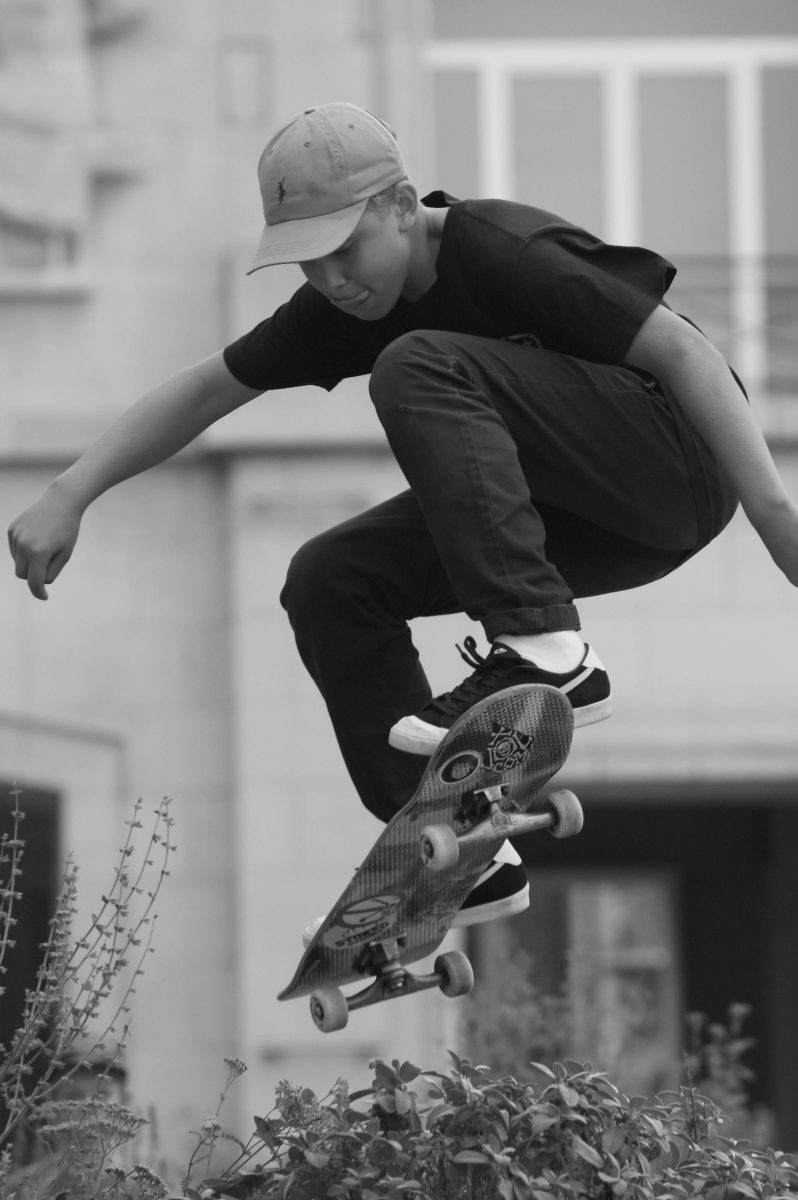
Strengthening the emotional connection with your dog through exercise is a journey filled with shared experiences and achievements. It’s about more than just physical health; it’s about building a relationship based on trust, understanding, and mutual respect.
- Positive reinforcement and rewards play a crucial role in this process, turning each workout into an opportunity for bonding and learning.
- Positive reinforcement, such as treats or praise, encourages your dog to associate exercise with happiness and satisfaction. This method not only motivates them but also strengthens the emotional bond between you two.
- Sharing achievements is a powerful motivator. Celebrating milestones, no matter how small, fosters a sense of teamwork and accomplishment.
- Setting new goals together keeps the momentum going, pushing both of you to explore new challenges and reach greater heights. It’s a journey of continuous improvement, where each achievement paves the way for the next.
Ultimately, exercising with your dog is about more than just staying fit. It’s a pathway to a deeper, more meaningful connection. Through the highs and lows, the easy days and the challenging ones, you grow closer, building a bond that is both rewarding and enduring. So, lace up your sneakers, grab the leash, and embark on a fitness journey that will bring you and your furry friend closer than ever before.
In Closing
Exercising with your dog fosters unmatched companionship. It’s a journey of mutual growth and joy. Together, you navigate the balance of physical challenges and the rewards of a deeper bond, learning and adapting to ensure both health and happiness. This shared path not only strengthens the body but also the heart, promising a future of continued discovery and shared achievements. Embrace this journey, and let every step bring you closer.
Canine Fitness: Exercising with Your Dog FAQs
Yes, exercising with your dog can significantly improve your bond. Activities like walking, running, or playing together not only provide physical benefits but also increase trust and communication between you and your pet. This shared time can deepen your connection and make your dog more attentive and responsive to you.
Yes, you can exercise your puppy, but it should be done with caution and gradually increased. Short walks and play sessions that don’t overstrain their developing joints are ideal. As puppies grow, their tolerance for exercise increases, and activities can become more varied and longer in duration.
Signs that your dog is getting enough exercise include a healthy weight, good sleeping patterns, and a calm demeanor at home. Lack of exercise may lead to destructive behavior, restlessness, or weight gain. Regular veterinary check-ups can also help assess if your dog’s exercise routine is sufficient for their health needs.
Always provide fresh water before, during, and after exercise, especially on hot days or during intense activities. Carrying a portable water dish on walks or runs ensures your dog can drink as needed. Monitoring your dog for signs of dehydration, such as excessive panting or lethargy, is also crucial.
Dogs should be exercised daily, though the duration and intensity depend on their breed, age, and health status. Smaller breeds or older dogs may require shorter, more frequent walks, while larger, more energetic dogs benefit from longer sessions of physical activity. Consistently providing your dog with the right amount of exercise can prevent behavioral issues and health problems.
Running can be a safe activity for your dog, provided they are physically suited to it and it’s introduced gradually. It’s important to consider the dog’s breed, age, and health status before starting a running regimen. Always monitor your dog for signs of fatigue or discomfort during runs.
Indoor exercises can include hide-and-seek, stair climbing, and interactive toys that stimulate mental and physical activity. These activities are especially useful during bad weather or for dogs with limited outdoor access. Keeping exercise fun and varied even indoors can help maintain your dog’s fitness and prevent boredom.
Over-exercising can lead to injuries, heatstroke, or joint problems, especially in young or older dogs. It’s crucial to tailor the exercise to the dog’s age, breed, and health condition, and to watch for signs of exhaustion or discomfort. Adequate rest and hydration are essential to prevent the negative effects of excessive exercise.
If your dog is reluctant to exercise, try different activities to find one that they enjoy. Mixing up routines with games like fetch or tug-of-war can make exercise more appealing. Patience and positive reinforcement are key in encouraging a dog to be more active.
Walking, running, and agility training are among the best exercises for dogs. These activities not only help in maintaining a healthy weight but also improve their mental health and agility. Regular engagement in these exercises can significantly enhance the bond between you and your dog.
Orlando is a all round athlete from Australia, now resident in Germany. His sports of passion of American Football(Offensive line), weight training and indoor rock climbing where he uses his 195cm wing span to his advantage.

